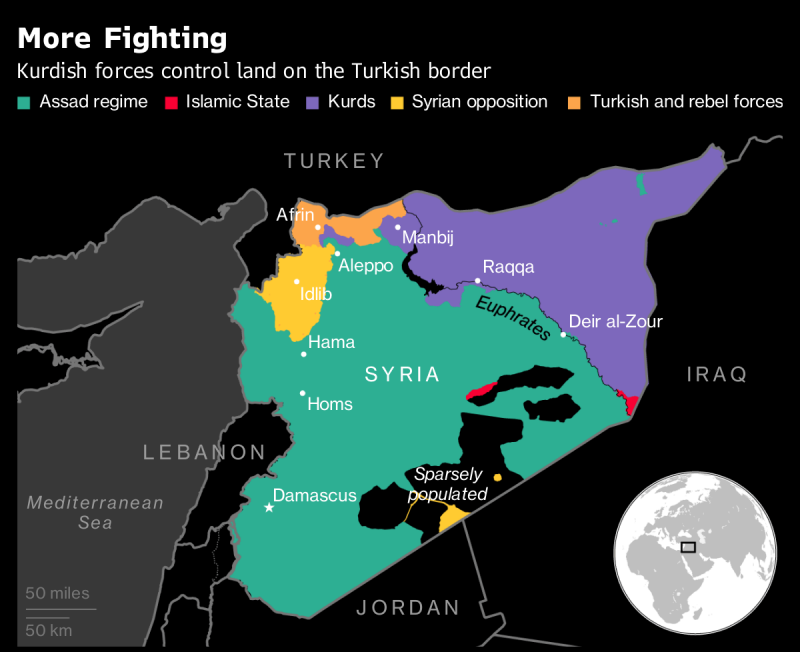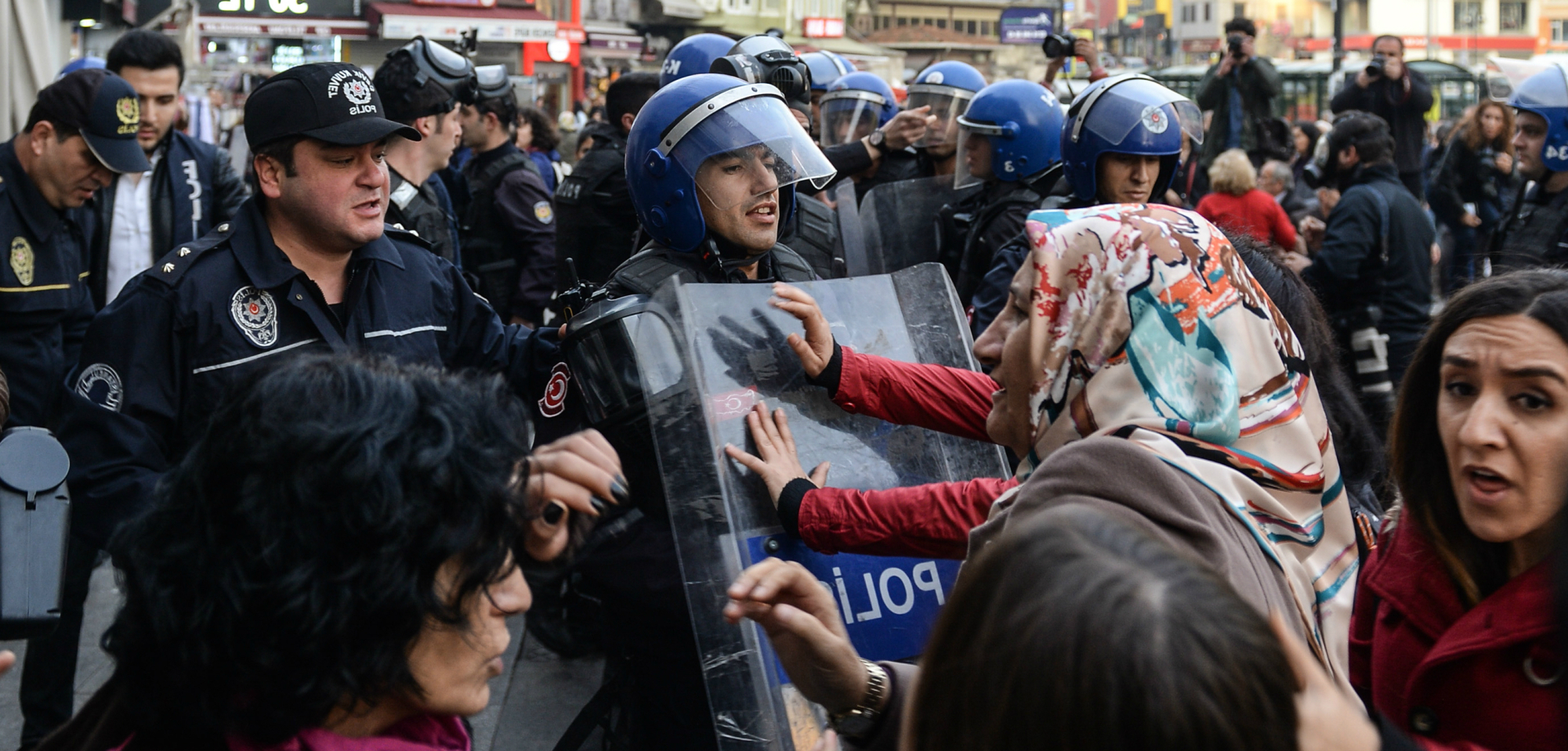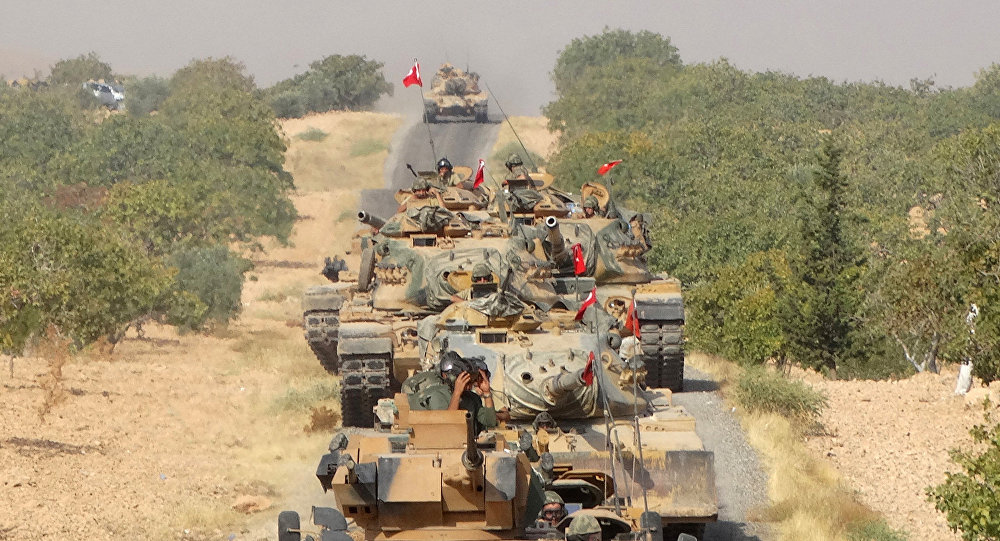[authorbox authorid=”32″ title=”Author”]
As this piece was being penned, speculation was ongoing surrounding Turkey’s proposed 32 kilometre ‘safe zone’ on Syrian territory east of the Euphrates. The idea gained traction in the wake of US President Trump’s unexpected December 2018 announcement that US forces would withdraw from the region. Although Washington was immediately plunged into confusion and contestation over the timing and nature of the withdrawal, Trump has appeared ready to entertain Turkish President Erdogan’s idea. This is so despite the possibility that some residual US (and French and British) presence might be retained, that US air power could still control the skies over the region, and that the US has reportedly continued shipments of arms to the Kurdish People’s Protection Forces (YPG)-led Syrian Democratic Forces (SDF) that are currently in control there. Erdogan has threatened to push ahead with his plans even in the absence of a green light from Washington. That his proposed ‘safe zone’ would be lacking in territorial depth demonstrates he has little intention of taking on IS, notwithstanding his promises to do so. Ankara has also suggested that it could resettle there some of the refugees currently residing in Turkey, although it is not at all certain that they would wish to return to Syria voluntarily.
At a meeting in Moscow in January 2019, Erdogan and his Russian counterpart President Putin both welcomed Trump’s initiative, but any meeting of minds on what happens next remained opaque. Russia’s position is that Syrian government forces should take control of the area, preferably in cooperation with the YPG. Indeed, Moscow is in dialogue with the YPG, is currently encouraging talks between Damascus and the YPG, while its own forces appear to be operating alongside SDF forces near Manbij. Moscow is also seeking to engineer a rapprochement between Damascus and Ankara, although there are as yet no formal contacts between them. It is unlikely that Syrian forces would take on the YPG militarily, and Ankara is unlikely to believe that a Syrian government advance into the region that received the blessing of the YPG would lead to the latter’s subordination. For Turkey the YPG is the problem, as it argues both that it is an offshoot of the Kurdistan Workers Party (PKK) and that it poses a ‘terrorist’ threat to the security of Turkey’s southern border – notwithstanding the fact that no YPG attacks across that border have been recorded. In short, it is far from clear what might, or even what could, come of the ‘safe zone’ proposal.
Were Turkish forces to cross the border into YPG-dominated areas, subduing the forces opposing them might not be easy, even if Turkey were granted air superiority as a result of a US withdrawal and Russian acquiescence, neither of which can be assumed. The YPG has been well armed and well-trained by its US sponsors, and has been assiduously digging tunnels, trenches and other defensive fortifications. For their part, Turkish armed forces have been weakened by Erdogan’s extensive purges and are already thinly stretched by their engagements in Afrin, Idlib, northern Iraq and southeastern Turkey. Indeed, the four star Turkish General who has hitherto commanded the Syrian and Iraqi fronts, and the commander of Turkey’s Fourth Army, were recently demoted because, it is rumoured, they pointed out the risks that a military operation east of the Euphrates entailed. Establishing a 32 kilometre ‘safe zone’ would require achieving and maintaining control over heavily Kurdish-populated urban areas such as Kobane and Qamishli, which would hardly be easy.
A Turkish operation would involve a campaign of aerial and artillery bombardment, followed by the entry of special forces, commandos and armoured units. They would be augmented by elements of the various ‘jihadi’ factions that constitute the Turkey-sponsored Free Syrian Army (FSA). This would resemble the Turkish capture of the YPG-controlled canton of Afrin in western Syria in early 2018, although the comparison shouldn’t be taken too far. The YPG presence in Afrin was considerably lighter than it is in north-eastern Syria, and it put up little resistance. The surrounding territory is controlled by Turkey or by government troops. The YPG would enjoy a far greater defensive depth in north-eastern Syria. Even so, during the campaign to capture Afrin, many civilians were killed in indiscriminate Turkish bombing raids on towns, villages and fleeing convoys, to which Russia gave a green light and from which Washington stayed aloof. Around two hundred thousand people – around half of the canton’s inhabitants – fled during the early weeks of the operation, and many have failed to return or have been refused re-entry.
Afrin is today more or less in a state of anarchy. Factions such as Ahrar al-Sham, the al-Shamiyeh Front, the Sultan Murat Brigade (composed mainly of ethnic Turkmen), Faylaq al-Rahman (who run sharia courts), Jaish al-Islam, the Firqat al Hamza division, Ahrar al-Sharqiyya (mainly from Deir-es-Zor), the Nour al-Din al-Zenki Movement, and Ferqa 55 – many of which also participated in the Turkey-led Operation Euphrates Shield (August 2016-March 2017) – are engaged in incessant squabbles to control various smuggling and protection rackets, check-points and other spoils of occupation. Turkish forces have been unable to control them, have sometimes been engaged in firefights with them, have been obliged to impose localised curfews from time to time – and have sometimes aligned with them in their racketeering and intimidation of locals. A notorious instance of this was the requisitioning and export to Europe via Turkey of Afrin’s entire olive oil crop. Extensive ethnic cleaning of Kurds has taken place, and even non-YPG Kurds have been detained and tortured. There is no reason to reason to assume such practices would not be repeated in the event of a Turkish presence east of the Euphrates.
There has been widespread looting, kidnapping, ransoming, theft, torture, murder, public executions, imposition of Sharia, and abuse of women in Afrin. Members of the various FSA factions and their families, displaced from eastern Ghouta and, within the last few weeks and months, from Idlib, where they recently suffered defeat at the hands of the Hayat Tahrir al-Sham (HTS – or al-Qaeda in Syria), have forcibly taken over the homes and property of (especially Kurdish) locals. This too would surely be repeated east of the Euphrates in the event that Turkey deploys similar elements from the FSA. On the other hand, the ready surrender of such groups to HTS in Idlib must caution Turkey’s military planners from over-reliance on them in the event of an incursion east of the Euphrates, where they would surely make little headway against the battle-hardened, well-led and motivated YPG. This further highlights the need for effective Turkish forces in any such venture. In any case, YPG units have mounted a sustained campaign of bombings, shootings, and other raids against Turkish and Turkey-allied forces in Afrin since the takeover, and this is likely to continue. Capturing an area is sometimes easier than holding and pacifying it, and this observation would certainly apply east of the Euphrates – that is, in the event that Turkey succeeded in capturing the region, which it might not.
Afrin has also been subjected to extensive ‘Turkification’, with the introduction of Turkish services such as telecommunications and health care, the Turkish educational curriculum, and Turkish-trained and supervised police units and administrators. Turkish language signs and teaching have taken the place of Kurdish in particular, and the Turkish flag is ubiquitous. Even the statue of the Kurdish mythical hero Kawa was bulldozed and a Kurdish cemetery destroyed. Few independent journalists or NGO’s have been allowed entry into the province, and the ‘Syrian Interim Government’ that has been installed is firmly directed from Ankara. Ankara rejected a February 2018 UN call for a ceasefire to be extended to Afrin. In effect, the province has been annexed by Turkey, and there have even been clashes between Turkish forces and pro-Damascus ‘popular forces’ in the area. A prolonged and high-profile Turkish presence would not be long tolerated by Damascus, neither in Afrin nor in north-eastern Syria.
There is little reason to suppose that a Turkish presence east of the Euphrates would be more respectful of the rights of the local population and bring more order to it than has been the case in Afrin. Indeed, given the likelihood of more effective Kurdish resistance, one must assume the situation could be considerably worse. Trump might be unconcerned by such a prospect, and so too might Putin, but there are few grounds for either of them to surmise that either their reputations or the tranquillity of north-eastern Syria would be enhanced by their acquiescence to Erdogan’s declared intention.B



